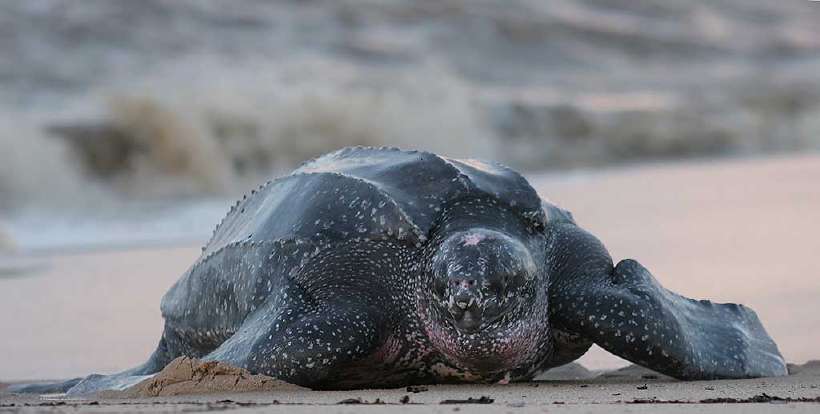Can you name an animal that returns to the place of its birth, every single year, journeying more than 1,000 km to do so? Well, here is another hint: this animal is a sea creature that originated on earth more than 200 million years ago- making the species older than the oldest ever dinosaur.
Give up? They are none other than marine turtles, more commonly known as sea turtles. Seven existing species of sea turtles exist in the world today of which at least four (the Olive Ridley, Green Hawksbill, Leatherback and Flatback) are fairly common in the waters of the Indian Ocean. The sea turtle, or the Leatherback is the largest living turtle. It can grow up to a length of six feet and is known to weigh about 700 kgs!

Sea turtles live mostly in warm waters around the world and are graceful swimmers, with limbs modified into long flippers that enable them to migrate long distances. Among the many natural phenomena that we are yet to understand, is the mass nesting by sea turtles, known as ‘arribada’.
The word ‘arribada’ is derived from the Spanish word ‘arribadas’ which means ‘arrival’. There are four such mass nesting sites (or arribada sites) in the world- two in Costa Rica, one in Mexico and the largest in Gahirmatha beach on the Orissa coast.
Each year, from December to April, Gahirmatha plays host to hundreds and thousands of female Olive Ridley turtles. These turtles lay their eggs on the same beach where they were born. Turtles always return to the same nesting site year after year, even if they migrate thousands of kilometres. This particular phenomenon has baffled scientists for years now and no one has any clue as to why they do so.
Sea turtles rarely venture out of the deep and they never seem to have a permanent habitat for they are continuously on the move. Unlike the male Olive Ridleys who prefer the anonymity (and safety) of the sea, female Olive Ridleys brave predators as they drag themselves to the shore to lay their eggs. Each year more than one lakh Olive Ridley turtles lay about 100 eggs each in the sands of Gahirmatha beach.
Mama turtle lays her eggs in pits and covers them with sand using her flippers. However the slightest disturbance can result in mama turtle returning to the sea without laying eggs. Her task complete, she heads off to the sea, only to return next year to the very same beach, again during the nesting season.
Meanwhile the eggs are easy targets for predators. Stray dogs often manage to ferret out the catch and gobble up the eggs. Those that aren’t eaten hatch after 50-70 days and the teeny baby Olive Ridleys immediately begin moving towards the sea. How do they do that?
Researchers and biologists say that the hatchlings are attracted by the bright horizon or the moonlight sparkling on the water. Recent studies show that the glow of neon lights and brightly lit buildings has been misleading the babies, making them lose their bearings.
In the last few years, the number of turtles nesting at Gahirmatha (and the smaller adjoining beaches) has reduced. Environmentalists point out that the indiscriminate fishing by local villagers results in turtles getting entangled in the huge nets and few fisherfolk release the animal back safely. Instead, they kill it and toss the carcass into the water.
Protests by wildlife activists forced the government to take action and in the year 1998, Gahirmatha became a protected wildlife sanctuary with the coast guard and the forest department monitoring the coastal waters.
624 words |
6 minutes
Readability:
Grade 8 (13-14 year old children)
Based on Flesch–Kincaid readability scores
Filed under: planet earth
Tags: #coast, #olive ridley turtles, #turtles, #predators
You may also be interested in these:
Earth Heroes
How are Frogs Different From Toads?
The Girl who Squeezed a Peacock
The Adventures of a Magic Turtle
The Deadliest Animal in the World